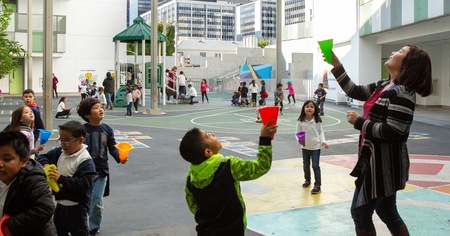These are the questions authors Dr. Dale A. Blyth, NAA board member; and Dr. Deborah Moroney and Dr. Jill Young from American Institutes for Research, try to address in their recent Medium article, which includes insight from Heidi Ham, NAA's Vice President of Programs and Strategy. As 2020 draws to a close, the authors reflect on the many disruptions people have had to face this year, along with examining how education can better center equity and transformation.
The article describes how healthy learning and development opportunities are made up of three essential building blocks—caring people, constructive places and challenging possibilities—and shares how the five guiding principles for addressing the whole young person, offered by the science of learning and development (SoLD), can come together in a variety of ways.
"Schools are one critically important and necessary part of the ecosystem and one place where learning happens. But what if we officially recognized that learning and development happens everywhere?" the authors write. "All adults, all settings, and all experiences matter in learning and development. Can we afford to be less intentional about what happens in all these places and the ways we support the people who provide such diverse experiences if learning and development for all youth truly is a priority?
The article notes that life experience, decades of research on community programs, social and emotional learning, and SoLD make it clear that schools are only a part of the journey.
"Too often, schools focus on formal approaches that stress content knowledge over engagement and social and emotional learning," the authors continue. "Many definitions of learning and education are mostly limited to what happens in school buildings, even though we know that, in reality, children learn and develop in the ecosystems they experience every day—in their homes, communities, schools, and even in their virtual worlds."
With a dramatic shift in how young people learn and develop, the authors ponder if this current disruption in education will lead to wider agreement that enhancing community learning and development opportunities needs to be a higher priority—one that is approached with greater intentionality.
In the article, Ham suggests that adults who work with young people are not simply superheroes, but rather skilled professionals. They are, in other words, members of a youth workforce who have core knowledge and competencies.
"The youth fields workforce understands how to engage with young people, show young people they care, challenge young people to learn and grow, and share power with young people," the authors write. "If we recognize that these adults are the critical lever for engagement, learning, and development, the next step is to consider how to support them, so they can be successful in their powerful and ever more challenging roles."
The article prompts readers to reflect upon how the pandemic has highlighted existing inequities and in response, beckons them to invest in policies and structures to "systematically support the full variety of people with whom youth learn, the diversity of places where youth learn, and the range of different experiences from which youth learn and develop."
An example of this, according to the authors, could be incentivizing cross-sector alignment or dedicated resources and time for professional development and career pathways for those working with youth.
"What if we took steps to better understand how youth experience learning and development (including the places where it happens, people involved, and the opportunities youth have)?"
To read the article in its entirety, visit Medium.
Courtesy of NAA.




